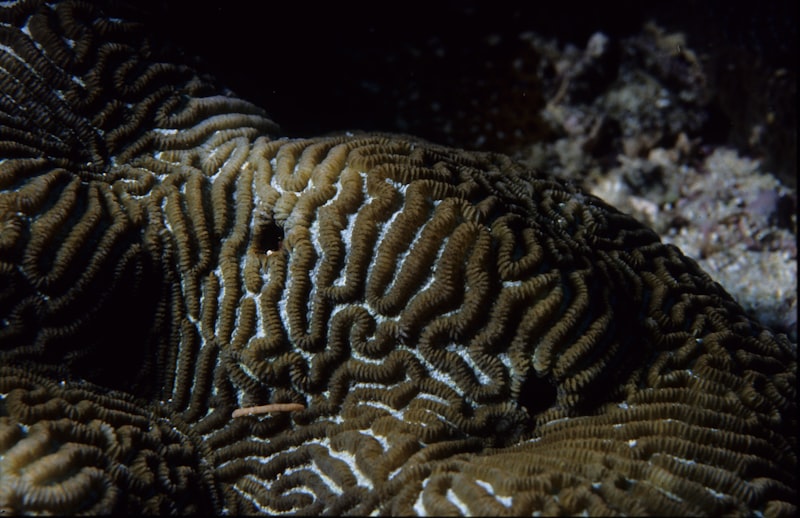Imagine marine algae as nature’s carbon vacuum cleaners, tirelessly filtering out CO2 from the water as they grow. Through photosynthesis, they harness sunlight to convert carbon dioxide into organic matter, releasing oxygen in the process. This dual action not only supports marine life but also helps in regulating global carbon levels.
Analogous to trees on land, marine algae act as the ocean’s green lungs, breathing in carbon dioxide and exhaling oxygen. Their widespread presence in aquatic ecosystems ensures a continuous cycle of carbon absorption and oxygen release, maintaining the delicate balance necessary for life underwater and beyond.
In essence, marine algae serve as guardians of our oceans, quietly absorbing excess carbon dioxide and buffering the impacts of human-induced emissions. As climate concerns grow, scientists are increasingly studying these algae to understand their full potential in carbon capture and storage strategies.
From kelp forests swaying in coastal waters to microscopic phytoplankton drifting in the open sea, every species of marine algae contributes uniquely to carbon sequestration. Their collective effort underscores the importance of protecting marine habitats and fostering biodiversity as part of a holistic approach to climate resilience.
The role of marine algae in carbon sequestration is pivotal, highlighting the interconnectedness of ocean health and global climate stability. By appreciating and conserving these underwater plants, we can leverage their natural carbon-absorbing abilities to safeguard our planet’s future.
Ocean’s Green Giants: How Marine Algae Could Revolutionize Carbon Sequestration
Have you ever wondered how our oceans, vast and mysterious, hold the potential to combat climate change? Enter marine algae, the unsung heroes of carbon sequestration. These tiny organisms, often overlooked, could be the key to mitigating our carbon footprint in a big way.
Marine algae are not just any seaweed you might see washed up on the shore—they are powerful carbon absorbers. Through a process called photosynthesis, they absorb carbon dioxide from the atmosphere, much like plants on land. What sets them apart is their efficiency; some types of algae can absorb carbon dioxide even more effectively than terrestrial plants. It’s like having a superhero in the ocean, quietly fighting climate change every day.
Scientists are increasingly looking at marine algae as a sustainable solution for carbon capture and storage (CCS). Unlike mechanical methods of carbon capture, algae-based CCS is natural and scalable. Imagine vast algae farms in our oceans, soaking up carbon dioxide and releasing oxygen in return—a true win-win for our planet.
But how exactly does it work? Algae use sunlight, water, and carbon dioxide to grow. As they photosynthesize, they convert these elements into organic matter, effectively trapping the carbon dioxide within their biomass. When the algae die or are harvested, this biomass can be stored or processed into biofuels, fertilizers, or even food products, further reducing carbon emissions across various industries.
Moreover, algae are incredibly versatile. They can thrive in various marine environments, from shallow coastal waters to the depths of the open sea. This adaptability makes them a feasible option for carbon sequestration on a global scale.
Nature’s Carbon Sponges: Unveiling the Power of Marine Algae
Ever wondered about the unseen heroes silently combating climate change beneath the waves? Enter marine algae, the unsung champions of our oceans, quietly absorbing carbon dioxide and mitigating its impact on our planet. These extraordinary organisms, often overlooked in mainstream discussions, play a crucial role in regulating Earth’s carbon balance.
Marine algae, ranging from microscopic phytoplankton to towering kelp forests, are adept at photosynthesis. Like terrestrial plants, they harness the energy of sunlight to convert carbon dioxide into organic matter, releasing oxygen as a byproduct. This process not only supports marine life but also contributes significantly to global carbon cycling.
What makes marine algae particularly fascinating is their sheer diversity and adaptability. From the nutrient-rich waters of coastal estuaries to the frigid depths of polar oceans, these organisms thrive in diverse environments worldwide. Their ability to sequester carbon dioxide helps maintain oceanic pH levels and supports marine ecosystems, making them indispensable in the fight against climate change.
Imagine marine algae as nature’s own carbon sponges, soaking up excess carbon dioxide from the atmosphere and storing it within their biomass. This carbon storage not only aids in regulating climate but also holds potential for carbon capture and storage (CCS) technologies.
In addition to their environmental benefits, marine algae contribute to biodiversity, providing habitat and food for a myriad of marine species. Their economic importance spans from pharmaceuticals to food additives, demonstrating their value beyond ecological roles.
As we delve deeper into understanding these remarkable organisms, it becomes clear that protecting marine algae habitats is essential. By safeguarding these natural carbon sinks, we not only preserve biodiversity but also enhance our planet’s resilience against climate change impacts.
Nature’s carbon sponges, marine algae continue to inspire scientific discovery and environmental stewardship. Their role in carbon sequestration underscores the interconnectedness of Earth’s systems and the importance of preserving our oceans’ health for generations to come.
From Seaweed to Climate Savior: Marine Algae’s Crucial Role in Carbon Capture
So, how exactly does marine algae manage this feat? These incredible organisms are adept at photosynthesis, the same process plants use to convert sunlight into energy. In doing so, they absorb CO2 and transform it into organic matter. This natural process not only fuels the growth of the algae themselves but also removes carbon dioxide from the air, helping to mitigate the greenhouse effect that contributes to global warming.
What’s even more astonishing is the scale at which marine algae operate. They cover vast areas of the ocean surface, forming what scientists call ‘marine forests.’ These underwater landscapes are home to a myriad of species, from microscopic diatoms to towering kelp forests. Together, they form a powerful carbon sink, capturing an estimated 40-50% of all carbon dioxide produced globally each year.
But it doesn’t stop there. Marine algae’s role extends beyond carbon sequestration. They also influence cloud formation and oceanic temperature regulation, impacting weather patterns worldwide. Their presence in marine ecosystems supports biodiversity and provides habitats for countless marine species, from fish to whales.
As we face the urgent challenges of climate change, understanding and harnessing the potential of marine algae could be a game-changer. Scientists and researchers are exploring ways to enhance algae’s carbon capture capabilities, from seeding new algae blooms to cultivating them in controlled environments. These innovations could potentially revolutionize carbon offset strategies, offering a natural solution to a pressing global issue.
Blue Carbon Revolution: Harnessing Marine Algae for Climate Change Mitigation
Imagine tiny marine plants, swaying gently in the ocean currents, quietly pulling carbon dioxide from the air and trapping it deep within their structures. This process not only helps in reducing greenhouse gas levels but also contributes to the restoration of degraded marine ecosystems. It’s a win-win scenario for both the environment and humanity.

The versatility of marine algae extends beyond carbon sequestration. These organisms are rich sources of biofuels, food supplements, and even biodegradable plastics. By harnessing their potential, scientists are paving the way for innovative green technologies that promise a brighter, more sustainable future.
But how exactly do marine algae accomplish this feat? Their ability lies in their photosynthetic prowess, converting sunlight and CO2 into organic matter through a remarkably efficient process. This makes them highly effective carbon sinks, capable of storing significant amounts of carbon in coastal habitats like mangroves, seagrasses, and salt marshes.

As we delve deeper into the Blue Carbon Revolution, the importance of preserving and restoring these coastal ecosystems becomes ever more apparent. They not only support biodiversity but also provide critical ecosystem services such as coastal protection and fisheries support. Investing in the conservation of these natural habitats is not just an environmental imperative but also a smart economic decision.
Underwater Forests: The Hidden Potential of Marine Algae in Capturing CO2
Marine algae, commonly known as seaweed, are not just slimy plants you find tangled on the beach. They are intricate organisms that thrive in the ocean’s depths, where they perform a remarkable feat: absorbing carbon dioxide and converting it into biomass through photosynthesis. This process is akin to how trees and plants on land absorb CO2, but marine algae do it underwater, making them hidden champions in the fight against global warming.
These underwater forests are found in oceans worldwide, from the chilly waters of the Arctic to the tropical seas of the Pacific. They come in various forms, from the delicate strands of kelp swaying gently with the currents to the microscopic phytoplankton that drift near the surface. Despite their diversity, they share a common mission: to help regulate Earth’s climate by capturing carbon dioxide.
The potential of marine algae in carbon sequestration is immense. Research indicates that these organisms can capture significant amounts of CO2, effectively reducing its presence in the atmosphere. This capability makes them a promising tool for mitigating climate change, offering a natural solution that complements other efforts to cut down on greenhouse gas emissions.
Imagine if we could harness this potential on a larger scale. By cultivating underwater forests or promoting their growth in marine ecosystems, we could enhance their capacity to capture CO2. This concept is not just theoretical; scientists and environmentalists are exploring ways to maximize the carbon sequestration capabilities of marine algae, from sustainable aquaculture practices to marine conservation efforts.
As we delve deeper into understanding these underwater forests, their importance becomes clear. They are not just a picturesque part of marine life; they are vital players in Earth’s carbon cycle. By protecting and nurturing these underwater ecosystems, we can leverage their hidden potential to combat climate change effectively.
Beyond the Surface: Exploring Marine Algae’s Untapped Capacity for Carbon Storage
Algae, ranging from microscopic phytoplankton to large kelps, play a pivotal role in the global carbon cycle. Through photosynthesis, these aquatic organisms absorb carbon dioxide from the atmosphere and convert it into organic matter. This process not only supports marine life but also sequesters carbon in the ocean. The efficiency of algae in carbon storage surpasses that of terrestrial plants, making them crucial allies in the fight against rising CO2 levels.
Scientists are increasingly exploring ways to harness this natural ability of marine algae for carbon capture and storage (CCS) technologies. By cultivating algae in controlled environments or enhancing natural habitats, researchers aim to maximize carbon sequestration efficiency. This approach not only mitigates greenhouse gas emissions but also promotes biodiversity in marine ecosystems.
Furthermore, the potential applications of marine algae extend beyond environmental benefits. Algae-based products, such as biofuels and biodegradable plastics, offer sustainable alternatives to fossil fuels and conventional plastics. These innovations not only reduce dependency on non-renewable resources but also contribute to a circular economy model.
As we delve deeper into the ocean’s blue expanse, the role of marine algae becomes increasingly pivotal. Their unassuming presence belies their profound impact on global carbon levels and ecological sustainability. By unlocking and amplifying their natural carbon storage capabilities, we pave the way for a greener, more resilient future.
Marine algae represent a beacon of hope in the quest for sustainable solutions to climate change. Their ability to store carbon and support diverse ecosystems underscores the importance of preserving and harnessing their potential for generations to come.
Algae Farms of the Sea: Scaling Up for Global Carbon Sequestration
In the vast expanse of our oceans, a quietly burgeoning revolution is taking place: the rise of algae farms dedicated to global carbon sequestration. These underwater fields of green aren’t just about cultivating seaweed; they represent a cutting-edge solution to mitigate climate change. But what exactly are algae farms, and how do they contribute to our planet’s future?
Imagine vast underwater meadows, where algae thrive in nutrient-rich waters, soaking up carbon dioxide from the atmosphere. Algae, through the process of photosynthesis, absorb CO2 and release oxygen back into the environment. This natural process not only helps to balance oxygen levels but also plays a crucial role in reducing greenhouse gases that contribute to global warming.
The concept of algae farms goes beyond traditional agriculture. It involves cultivating specific species of algae in controlled environments, such as coastal waters or enclosed ponds. These farms are designed to maximize growth and carbon absorption efficiency, often using innovative technologies to monitor and optimize conditions.
One of the key benefits of algae farms is their scalability. Unlike land-based carbon capture solutions, which may face limitations due to space or environmental impact, algae farms can be expanded across vast marine areas without competing for arable land. This scalability makes them a promising contender in the quest for sustainable carbon sequestration.
Moreover, algae farms offer a multifaceted approach to environmental stewardship. Beyond carbon sequestration, algae cultivation can yield valuable by-products such as biofuels, fertilizers, and even food supplements. This versatility makes algae farms not only environmentally beneficial but also economically viable in the long term.
As we look to the future, the potential of algae farms to combat climate change cannot be overstated. They represent a natural, sustainable solution rooted in the power of marine ecosystems. By scaling up these underwater fields of green, we can make significant strides towards a cleaner, greener planet.
Frequently Asked Questions
What is carbon sequestration, and how do marine algae contribute to it?
Learn about carbon sequestration and the role of marine algae. Discover how marine algae absorb carbon dioxide from the atmosphere and oceans through photosynthesis, converting it into organic matter. This process helps reduce greenhouse gases and mitigate climate change by storing carbon in the ocean ecosystems.
How can marine algae-based carbon sequestration support sustainable ocean health?
Learn how marine algae-based carbon sequestration contributes to sustainable ocean health by efficiently capturing carbon dioxide from the atmosphere and storing it in algae biomass. This process helps mitigate climate change impacts while promoting marine biodiversity and ecosystem resilience.
Which types of marine algae are most effective in capturing carbon dioxide?
Learn about the types of marine algae that are most effective in capturing carbon dioxide, helping to mitigate climate change. Discover how these algae species contribute significantly to carbon sequestration in marine environments.
What are the environmental benefits of using marine algae for carbon sequestration?
Learn about the environmental benefits of using marine algae for carbon sequestration, including its ability to absorb CO2 from the atmosphere, mitigate ocean acidification, and support marine ecosystems. Discover how algae can contribute to sustainable solutions for climate change.
How do marine algae help mitigate climate change through carbon sequestration?
Discover how marine algae contribute to climate change mitigation through carbon sequestration. Learn about the role of algae in absorbing CO2 from the atmosphere and oceans, thereby reducing greenhouse gas levels. Explore how this natural process aids in regulating global climate patterns by storing carbon in ocean ecosystems.


